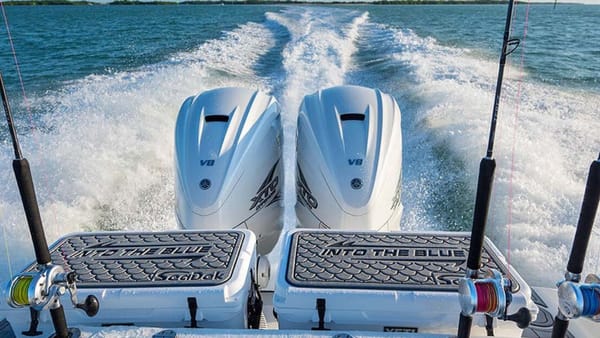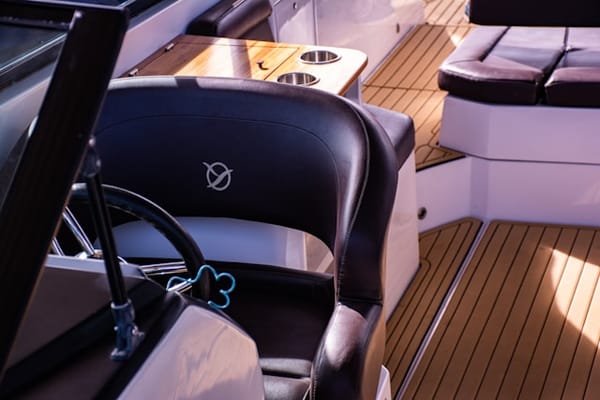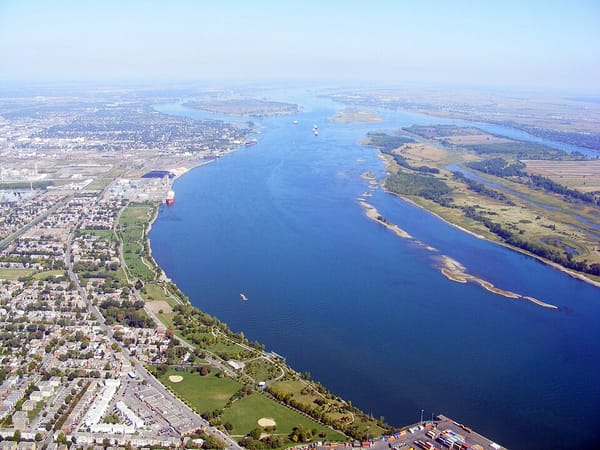Boating Basics: Marine Steering Systems
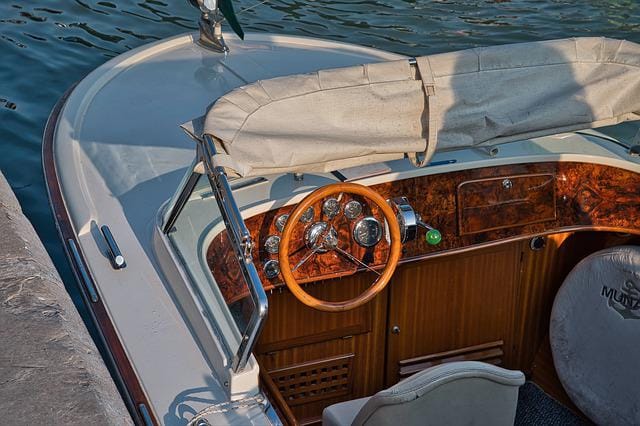
While steering a boat is basically the same as steering a car, there are some differences. Steering a boat affects the back of the boat rather than a car where steering affects the front wheels. And then, of course, you’re dealing with water that is pretty much always moving and never a firm flat surface (unlike pavement, which doesn’t move, hopefully).
The steering system is made up of the wheel, the helm, the steering cable and cable connections. These parts all link the steering wheel to the engine. Then, you have the propeller, which also affects the direction of the boat.
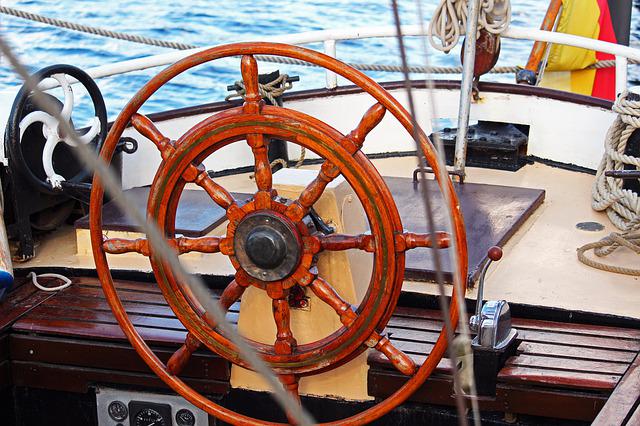
Photo: Pixabay
We’ll leave the intricacies of steering methods and maneuvers for another day. Today, we’re going to take a look beneath the helm to see just what makes that wheel steer the way it does and what might be the best choice for you. Keep reading from the comfort of your easy chair or a private boat slip rental to find out all about it.
As always, safety PSAs first … Make sure you’re wearing your engine cut-off switch safety lanyard before turning that key and starting the engine.
There are two main types of steering systems: hydraulic and non-hydraulic. Hydraulic is its own system while the non-hydraulic category is broken down into three sub-types: mechanical, rack and pinion and rotary.
Hydraulic Marine Steering System
1. Hydraulic
The most unique of all the steering systems, this one uses a hydraulic hose and lots of hydraulic pumps and valves. Hydraulic means that it’s operated by liquid moving in a small space under pressure. Three main parts include: the helm, the hose and the cylinder. A hydraulic hose connects the helm’s fluids to the cylinder (which is a cylindrical part that moves when it comes into contact with the hydraulic fluid).
How it Works
- When you move the steering wheel, a pump is activated.
- Then, smaller pumps are activated.
- This causes the cable to move, and then the engine moves.
Pros
- Steering feels light and smooth
- More resistant to corrosion (due to a lack of metal parts)
- Less maintenance than other steering systems
- Mainly used on mid to high-hp boat and speedboats
- Boat must be at least 32 feet long
Cons
- More expensive
- All those hoses and valves need to be checked for leaks and cracks
- Needs periodic bleeding of the system
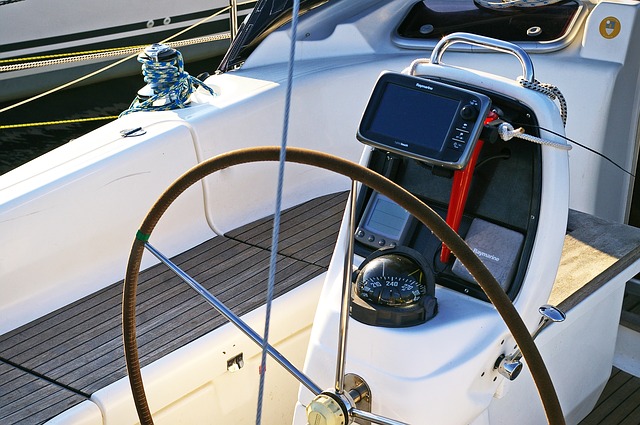
Non-Hydraulic Steering Systems
2. Mechanical
The mechanical marine steering system uses a cable. It’s the most basic of the four types. A cable is connected to several different components … the engine, then the motor and then to the helm. That connection between the cable and the helm is what makes steering possible. The cable is controlled by the steering wheel. Quick and simple.
Pros
- Basic system is good for new boaters
- Steering is easy with a traditional steering wheel
- Simple to install
- Least expensive
- Best for small boats (up to 32 feet in length)
- Good for engines with no more than 75 hp
Cons
- More maintenance needed than other systems
- Cable can become corroded, making steering stiff and hard to control
3. Rack and Pinion
The rack and pinion system uses a gear, but it also has a cable. There’s a steering cable that has an attached plate with a gear at the end. This fits into the teeth of the steering cable plate. As the wheel turns, the gear turns. This is what moves the plate.
There are two variations of rack and pinion steering: single rack and double rack. They work basically the same; double (or dual) rack just uses two cables instead of one.
Pros
- Very precise
- Double rack system is even more precise
Cons
- The cable must be placed very specifically
- Boat needs to be above a certain size in order to have rack and pinion
- Very limited lock-to-lock turning range (this represents how many full turns of the steering wheel must be made to turn the boat completely to the opposite side)
4. Rotary
The rotary system is similar to rack and pinion but uses a different method of holding and moving the cable to operate. Instead of using the plate to control the cable, there’s a more direct way of moving the cable. It uses a cable that spins around a gear. The rotary system also has two variations (single or double rack systems) like rack and pinion.
How it Works
- The cable has gear teeth (it’s stored in a box with a gear attached to it).
- A cable wraps around the gear in the box (making a U shape).
- The cable goes in one end of the box and comes out the other.
- As you move the wheel, the gear in the box moves and allows the engine to move back and forth. Essentially, the cable moves with the steering wheel.
Pros
- Better lock-to-lock turn range than other systems
- Takes up less space than other systems
- Cable can be installed in a variety of ways (meaning you could save money on the cables if you were able to use less cable for the connection)
Cons
- Doesn’t have quite as precise of control as rack and pinion systems
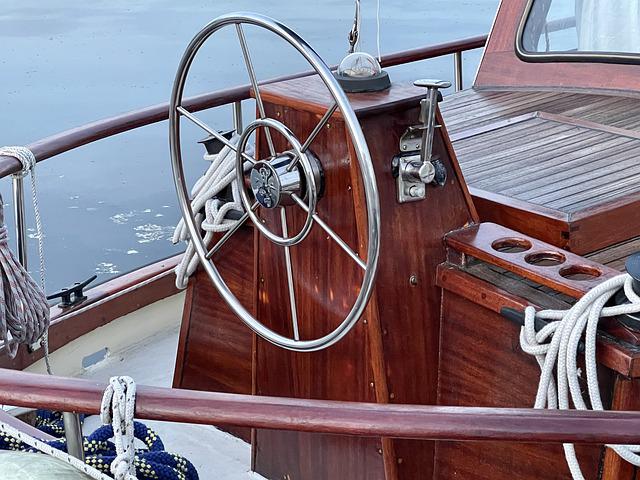
Photo: Pixabay
When deciding which system to use in your boat, think about:
- Type of drive (the motor and engine)
- Typical speed used
- Size of boat
Whether you’re in need of a new steering system, or just browsing options from a private boat dock for rent, we hope this has helped with any questions you might have about boat steering systems.
